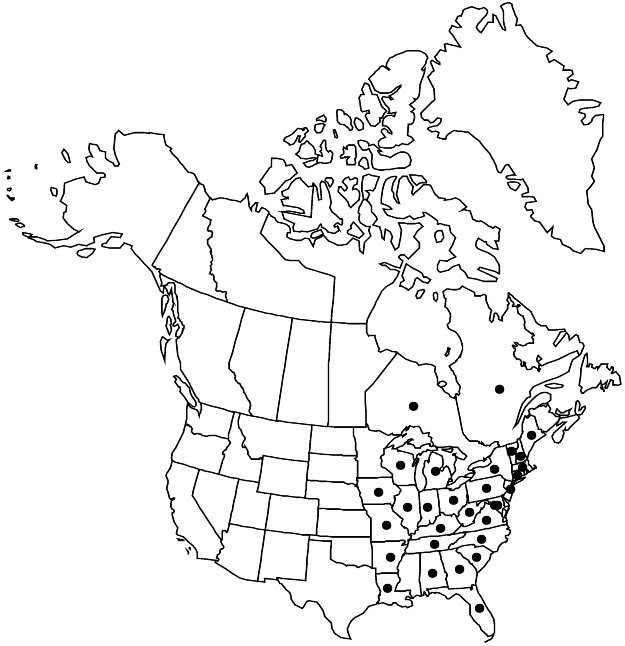Sedum sarmentosum
Enum. Pl. China Bor., 30. 1833 ,.
Herbs, perennial, mat-forming, glabrous. Stems creeping and ascending, branched, not bearing rosettes. Leaves in whorls of 3, spreading, sessile; blade pale yellowish green, not glaucous, narrowly rhombic-elliptic to widely lanceolate, subterete, 10–25 × 4–6 mm, base spurred, not scarious, apex subacute. Flowering shoots creeping or ascending, simple, 10–25 cm; leaf blades narrowly oblanceolate-elliptic, base short-spurred; offsets not formed. Inflorescences dense cymes or corymbs, 8–40-flowered, (1–)2–4-branched; branches spreading to widely ascending, sometimes forked; bracts similar to leaves, smaller. Pedicels absent or to 0.5 mm. Flowers 5-merous; sepals spreading, distinct basally, green, widely lanceolate to oblong, often unequal, 3.5–5 × 0.8–1.5 mm, apex acute or obtuse; petals spreading, slightly connate, yellowish, lanceolate to oblong, not carinate, 5–8 mm, apex long-mucronate; filaments yellow; anthers reddish; nectar scales orange, rectangular-spatulate. Carpels stellately patent in fruit, distinct, yellow-green. 2n = ca. 72.
Phenology: Flowering spring.
Habitat: Xeric rock outcrops
Elevation: 0-500 m
Distribution

Introduced; Ont., Que., Ala., Ark., Conn., D.C., Fla., Ga., Ill., Ind., Iowa, Ky., La., Maine, Md., Mass., Mich., Mo., N.H., N.J., N.Y., N.C., Ohio, Pa., S.C., Tenn., Vt., Va., W.Va., Wis., e Asia (China), introduced also in c, e Europe.
Discussion
Sedum sarmentosum has flowering shoots that are usually reddish. It is naturalized in North America, and in central and eastern Europe.
Selected References
None.